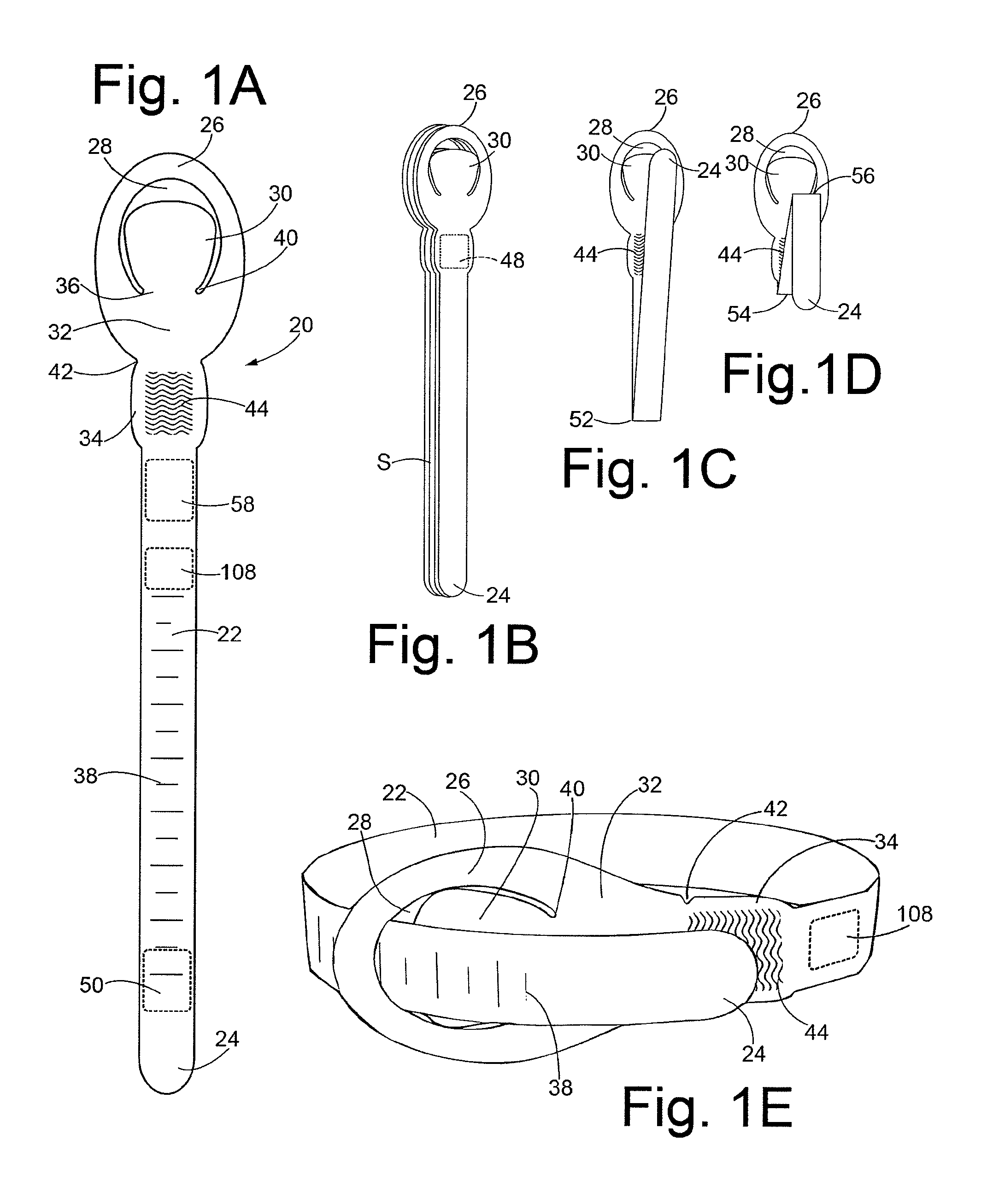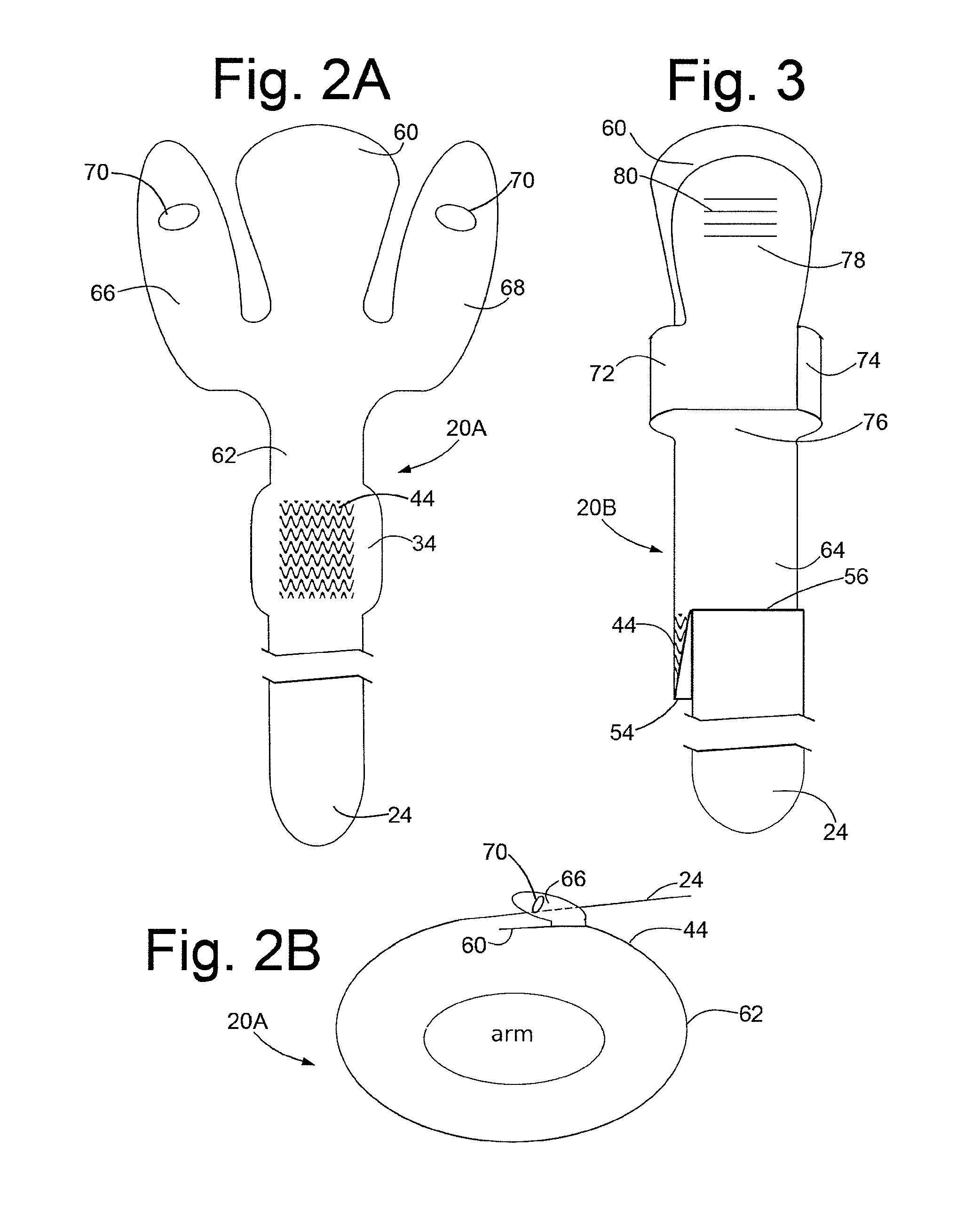Disposable venous tourniquets and methods of use
a technology of venous tourniquets and venous arteries, which is applied in the field of venous tourniquets, can solve the problems of difficulty in accurately estimating the actual pressure being applied, affecting the estimation of the actual tissue pressure being applied, and experienced users may not consistently provide the appropriate amount of tension. , to achieve the effect of increasing tissue pressure, preventing pinching of the patient's skin or pulling the patient's hair
- Summary
- Abstract
- Description
- Claims
- Application Information
AI Technical Summary
Benefits of technology
Problems solved by technology
Method used
Image
Examples
Embodiment Construction
[0031]Referring now to the various figures of the drawing wherein like reference characters refer to like parts, there is shown in FIG. 1A one exemplary embodiment of a tourniquet 20 constructed in accordance with this invention.
[0032]It must be pointed out at this juncture that the word “exemplary” is used herein to mean “serving as an example, instance, or illustration.” Any configuration or design described herein as “exemplary” is not necessarily to be construed as preferred or advantageous over other configurations or designs. Furthermore, use of the words “present invention” or “instant invention” is used herein is meant to include alternative embodiments to the disclosed exemplary embodiments that one of ordinary skill in the art understands. Thus, while some of the embodiments of the invention will be described more fully hereinafter with reference to the accompanying drawings, in which exemplary embodiments are shown, this invention may, however, be embodied in many differe...
PUM
 Login to view more
Login to view more Abstract
Description
Claims
Application Information
 Login to view more
Login to view more - R&D Engineer
- R&D Manager
- IP Professional
- Industry Leading Data Capabilities
- Powerful AI technology
- Patent DNA Extraction
Browse by: Latest US Patents, China's latest patents, Technical Efficacy Thesaurus, Application Domain, Technology Topic.
© 2024 PatSnap. All rights reserved.Legal|Privacy policy|Modern Slavery Act Transparency Statement|Sitemap



